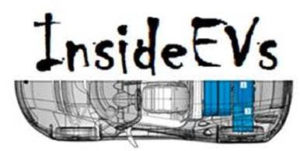UAW Sends Organizers To The Tesla Fremont Factory.
2 days ago by Steven Loveday.
Following the recent press surrounding a Tesla employee’s complaints about work conditions, the United Auto Workers sent a team of organizers to the Tesla Fremont Factory to attempt to facilitate unionization.
UAW president, Dennis Williams, verified the union’s presence at Fremont and made a reference to last week’s events. He said:
“I thought it was bizarre that all that took place. It’s uncharacteristic of Elon to attack his employees as quickly as he did.”
As the UAW reported last week, other Tesla Fremont Factory employees have also approached the organization for support. In fact, the UAW has been in contact with some of them for over six months. The workers reported long hours and unsafe working conditions. Williams shared:
“We have organizers out there. I do have a guy I hired who is a labor organizer but there’s nothing abnormal about it.”
The UAW has been hopeful to organize Tesla for some time now. U.S. union membership has diminished over the years, and just last week, Boeing voted against unionization. This was another critical hit for labor unions. The percent of U.S. workers that now belong to a labor union is at an all-time low of 10.7 percent.
The union has failed to organize German, Japanese, or Korean automakers in the U.S. and it is facing difficult odds in its attempt to unionize Tesla. Tesla CEO Elon Musk has said that the company is “union neutral,” meaning that workers can choose to organize if they desire. However, he has warned investors of the increased costs associated with work stoppages, employee dues, and other concerns.
Tesla vehicles are markedly expensive in the first place, and building a successful, monumental company, from the ground up, is an extraordinary feat. It comes as no surprise that, in over 113 years, no other company has pulled it off. Ford was the last successful U.S. automaker, prior to Tesla, and Ford has been on the verge of bankruptcy, along with facing many other detrimental issues in the recent past.
Source: Bloomberg
February 15, 2017.
House Committee Weighs Rollback of Federal Labor Rules.
A House subcommittee weighed the potential for legislation to undo some National Labor Relations Board actions under the Obama administration, including “ambush” union election rules and an expanded joint employer liability standard.
“Joint employer is certainly one of the regulatory outrages of the last several years,” witness Reem Aloul, owner of BrightStar Care in Arlington, Va., who spoke on behalf of the Coalition to Save Local Business, told the subcommittee Feb. 14. “The government issued a case decision, not even a regulation or formal rulemaking, that deeply changes the definition of what is an ‘employer.’ This uncertainty disrupts business relationships, and the government clearly doesn’t care.”
The hearing, titled “Restoring Balance and Fairness to the National Labor Relations Board,” was held by the Education and the Workforce Subcommittee on Health, Employment, Labor, and Pensions. Lawmakers fielded testimony from both employers and union advocates. The two-hour hearing sets the stage for an ongoing debate over labor laws that could be offered in this new Congress.
The subcommittee hearing comes as the Republican-controlled Congress and White House look to repeal or replace a wide range of Obama administration’s policies.
GOP Seeking to Reverse Board’s ‘Overreach.’
Republican lawmakers told Bloomberg BNA they want to address overreach by the NLRB, which could happen through a combination of legislation, executive orders and new rules. Targets include an NLRB rule to streamline the union representation process and the board’s decision to expand joint employer liability in Browning-Ferris Industries of California, Inc, which is currently pending on appeal before the D.C. Circuit. The board’s ruling in that case indicated that a business may be considered a joint employer under the NLRA if it has the right to control workers, even indirectly.
“We have repeatedly seen the Obama NLRB overturn long-standing labor policies and put in place new policies designed to empower special interests,” subcommittee Chairman Tim Walberg (R-Mich.) said during the hearing. “It’s why the board adopted an ambush election rule that chills employer free speech, cripples worker free choice, and jeopardizes the privacy of workers and their families.”
Some Democrats on the subcommittee defended actions of the former administration, calling the hearing the Republican’s latest effort to weaken labor unions.
“This really is, to be honest, nothing more than a continued attack on unions,” Marcia Fudge (D-Ohio) said. “It is an attempt to eviscerate all the workers’ rights and to give all rights and power to employers.”
The panel’s ranking Democrat, Rep. Gregorio Kilili Camacho Sablan (CNMI), suggested changes to the National Labor Relations Act that could “address the needs of working Americans whose pay has been largely stagnant over the past several decades, despite rising productivity.”
“Another choice is to go down the same path we have been following for the past three sessions of Congress, when there have been 25 hearings and markups focused exclusively on weakening the National Labor Relations Act,” he said. “Bills have been passed which give employers greater power to block union organizing efforts. Other bills actually blocked the ability of the NLRB to function.”
Groups Urge Repeal of Joint-Employer.
Aloul was one four witnesses who spoke during the hearing. The meeting occurred the same day more than 50 trade groups sent a letter to committee leaders, urging them to repeal the joint-employer standard set by the board.
“Businesses of all sizes are now perpetually exposed to unlimited and unpredictable joint employment liability that is disrupting many business formats,” the groups wrote. “While the change in Administration has generated a corresponding hope that the NLRB will eventually restore the traditional, common sense standard of joint employment liability based on ‘direct control,’ we are calling on Congress to enact a permanent legislative solution to joint employer that provides certainty to small and large businesses and promotes economic growth and job creation.”
Many of the panelists also urged that vacant positions on the NLRB be filled and that Congress take a look at the impacts of the union representation process.
Susan Davis, a union attorney and partner at firm Cohen, Weiss and Simon, however, defended the changes to the representation election process as “common sense changes.”
“While the employer community has charged the Board with creating ‘ambush’ or ‘quickie’ elections, in reality, the election rule makes modest, common-sense changes to the Board’s representation procedures to eliminate delays that had plagued the election process for decades,” she said. “The new rule reduces unnecessary litigation, streamlines hearings, and modernizes the procedures.”
To contact the reporter on this story: Tyrone Richardson in Washington at trichardson@bna.com
To contact the editors responsible for this story: Peggy Aulino at maulino@bna.com; Terence Hyland at thyland@bna.com; Christopher Opfer at copfer@bna.com
Could Employee Choice End Labor Unions’ Influence?
Posted on February 15th, 2017 by Adam C. Abrahms.
In 2016 private sector union membership dropped to its lowest level in history – a dismal 6.4%. Given the laws and systems in place related to union membership, this means that at least 94.6% of all American private sector workers currently choose not to be union members. The drop, recently reported in a routine annual report issued by the U.S. Department of Labor’s Bureau of Labor Statistics, also was the largest year over year percentage drop in recent years, dropping 0.3%, from 6.7% in 2015.
While the percentage of union members as a portion of the total workforce saw a steep drop, possibly more disturbing to union bosses is the fact that the actual raw numbers of union members also dropped over 100,000 members from 7.554 million to 7.435 million dues paying members. This loss of dues revenue could hurt unions’ efforts to organize members as well as lobby and elect politicians.
Report reveals employees choosing to reject unions.
What is remarkable about these numbers is what is behind them. All of the above numbers are based on union membership, individuals who are dues paying members either by choice or as a result of a compulsory union security clause in a non-right-to-work state. What the above numbers do not show is the numbers and percentages of the employees represented by unions.
The percentage represented remained relatively stable, only dropping 0.1% from 7.4% to 7.3% of all private sector employees. More striking, the raw number of employees represented actually slightly increased from 8.411 million to 8.437 million. The fact that there are actually more total employees represented by the unions but less total employees who are union member may be the biggest news of the recent report. It indicates that more employees are choosing to reject joining a union, even though the union represents them.
This fact has import not only in analyzing how union membership fell to a record low, but also what could be on the horizon for unions. Specifically, this drop seems caused by the growing support for the “Right-to-Work” movement.
The Right-to-Work resurgence.
Right-to-Work refers to statutes which are adopted for the express purpose of allowing employees the right to choose to join and pay dues to a union or choose not to be a union member. At their heart is employee choice – employees having the choice to decide whether they want to be a member of the union or decide they want to keep their job but not be a union member.
While the movement is far from new, it has enjoyed a resurgence in the recent years. This resurgence did not start in the typical Right-to-Work strongholds of the South, but bubbled up from historically union strongholds in the Rust Belt; possibly getting its genesis with the very public brouhaha over the 2011 Wisconsin public sector reforms instituted following the election of Governor Scott Walker. Shortly thereafter the Right-to-Work movement’s renaissance began as in 2012 Michigan and Indiana became Right-to-Work states; shocking the labor community and freeing private employees in those states from compulsory union membership. Wisconsin followed, extending Right-to-Work to its private sector employees in 2015. West Virginia passed Right-to-Work in 2016 and already this year both Missouri and Kentucky have joined the ranks for a total of 28 states now guaranteeing private sector employees the right to choose whether or not to become dues paying union members. New Hampshire seems poised to join the others as the 29th state soon. Add to this the counties and municipalities which have recently passed local Right-to-Work laws; a practice under dispute but sanctioned in late 2016 by the 6th Circuit Court of Appeals in UAW v. Hardin. Together, the Right-to-Work movement is experiencing its greatest success since the 1950s.
The new BLS report shows this resurgence has had real impact on the labor movement. Not just in the loss in the national percentage or even in the loss in raw number of members; rather by delving into the report, the true scope and possibly future can be ascertained. For example, Wisconsin, in its first year following giving employees the Right-to-Work, saw its total (public and private, BLS does not separate on a statewide basis) union membership dropped from 8.3% down to 8.1%. Michigan dropped from 15.2% down to 14.4%. Moreover, when you look all the way back to 2011, the year before Michigan passed Right-to-Work, Michigan’s union membership rate was 17.5%. In just 5 years, Michigan unions have lost 3.1% and dropped from 671,000 down to 605,000 dues paying members. This is a remarkable 10% plus loss in their ranks. Indiana likewise as dropped from 11.3% in 2011 down to 10.4% in 2016 despite tremendous job growth in traditionally unionized industries. Obviously, it is too soon to understand the true impact of Wisconsin, let alone West Virginia, Missouri and Kentucky, but if their precursor states are an indication, 6.4% may not be the historic low for long.
What this analysis also suggests is that 6.4% is not lily fully reflective of the percentage of American private sector workers who want to be dues paying members. With 22 states still allowing compulsory union membership through union security clauses and with those states actually having the majority of remaining union members, the true number of individuals who actually want to be union members is possibly far less.
National Right-to-Work, a real possibility?
This currently trapped group of American forced union members and their potential liberation is what could be even more concerning for unions and their coffers than the recent report of the historic low. Until very recently the Right-to-Work movement had realistically only been a state by state movement. For the first time, however, there is a real possibility that national Right-to-Work legislation could pass. In January Representatives Steve King of Iowa and Joe Wilson of South Carolina introduced the National Right-to-Work Act which would prohibit compulsory union membership for private sector employees covered by the National Labor Relations Act and the Railway Labor Act. While similar legislation has been proposed consistently in years passed, President Trump has stated he is a supporter of Right-to-Work (while President Obama would have swiftly vetoed it). With majorities in both the House and Senate, potentially the only thing stopping the Act would be a Democrat filibuster in the Senate. If Republicans held firm and could convince 8 Democrat Senators to join with them to break a filibuster and allow a vote, the US could have a national Right-to-Work law. Given the current division in Washington this may seem unlikely but 25 Democrat face election next year and 9 of those are from Right-to-Work states, including Michigan, Indiana, Wisconsin, Missouri and West Virginia plus another one from the teetering state of New Hampshire. Certainly it is possible.
As if these legislative threats were not enough, the battle over employee choice is being fought in the courts as well. Unions sighed collectively in relief last year when the Supreme Court deadlocked on the issue of whether compulsory dues collection from public sector employees was constitutional in Friedrichs v. California Teachers Association allowing the pro-union decision of the 9th Circuit to stand. However, in February the same lawyers who brought the Friedrichs case filed a new, virtually identical, suit in Yoon v. California Teachers Association. Likewise the case of Illinois public sector workers rights to choose to be union free is currently pending before the 7th Circuit in Rauner v. American Federation of State, County and Municipal Employees, Council 31. While these cases deal with public sector employees, many labor unions fear that an adverse ruling could be the first step towards a judicial determination that the NLRA’s sanctioning of union security clauses unconstitutionally violates individual employees’ free speech and freedom of association rights. Such a ruling would effectively make a national Right-to-Work law by judicial declaration.
Unions will not go quietly into the night.
Union’s will not take this existential threat without a counter offensive. Not only will they fight in Congress, the state houses and the courts, spending millions on lawyers and politicians, but they will fight in the workplace as well. With their backs to the wall employers should expect unions to be aggressively organizing, trying to use the Obama era gains they got through the Ambush Election rules and scores of pro-union NLRB decisions as the foundation for organizing drives. Unions will continue to try to grow their ranks in already heavily Democratic and more unionized states like New York (23.6%), California (15.9%), New Jersey (16.1%) and elsewhere where they can use their ranks, dues base and political clout to target employers. They will also continue to target industries where they have had more success like hospitals and other healthcare providers as well as industries where they are actually currently gaining like hospitality/accommodations (where membership is up from 7.4% to 7.6%) and telecommunications(where membership is up from 13.3% to 14.6%). They also will continue to push the traditional boundaries of the employment relationship, targeting franchisors in the fast food and other industries as well as the gig economy and companies such as Uber and Lyft utilizing independent contractors.
While the impact of the Right-to-Work resurgence and recent union membership reporting certainly indicates that giving employees a choice is a threat to labor unions; equally certain is that this threat is likely to cause more activity and challenges for employers who may be a target of unions seeking to replace lost revenue.




